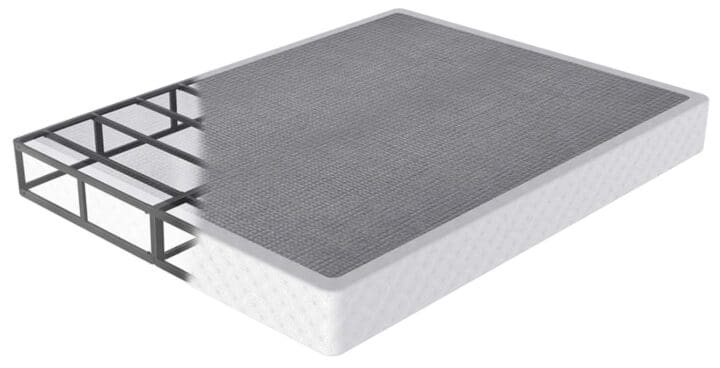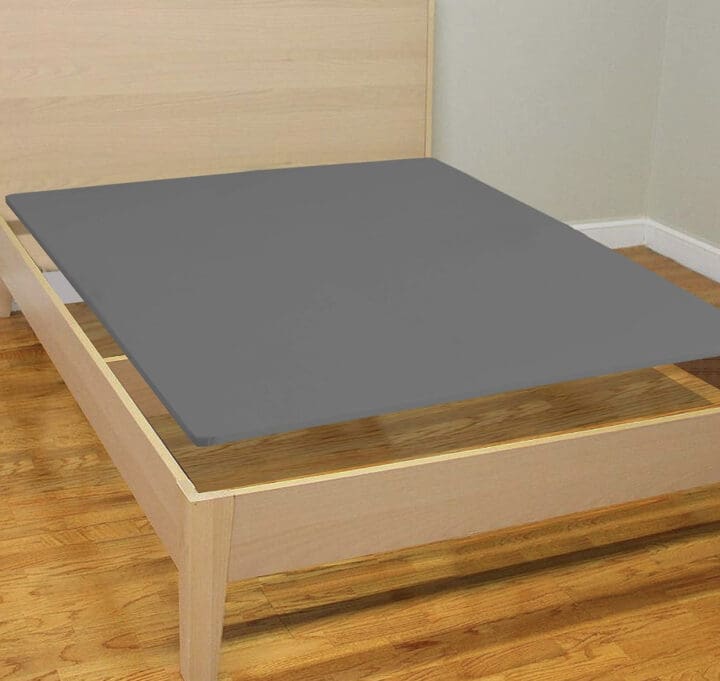While you might have enough information about mattresses and all of the different types available, you might not know enough about
Without adequate
Since
You may already know about the first two, but what about bunkie boards? With their low profiles that give you plenty of headroom, bunkie boards are worth getting to know. I’ll give you the rundown of this

A bunkie board is a thin flat board or platform made from particle board, plywood, metal, or other composite materials. The bunkie board is cut to your
Without a bunkie board, a traditional
If you have a box foundation, slatted foundation, box spring, solid platform, or metal frame bed, a bunkie board can work with these bed board types and more.
As you’d expect from its name, a bunkie board was designed as a base for bunk bed mattresses at the start of the twentieth century. The default was to use box springs, which fit traditional innerspring mattresses.
However, you couldn’t place a box spring underneath a bunk bed without the sleeper hitting the ceiling of the upper bed. From that need, bunkie boards came to be. They were 1 to 3 inches (typically 2 inches), allowing users to move and sit and sleep comfortably on bunk beds with sufficient headroom.
Afterward, their flat designs and sizes would become more diverse, providing low-profile support options for both bunk beds and regular-sized beds. Today, you can find them in different thicknesses, lengths, and widths and use them with beds that have no frames or upholstered, metal, and wooden frames.
I’ve mentioned how bunkie boards are a compact alternative to box springs, but allow me to elaborate more on that comparison. These types are designed to give mattresses support and added comfort, but that’s as far as the similarities go.
Starting with the obvious, a bunkie board is typically 2 inches high, whereas a box spring is bigger with a standard height of 9 inches. Thickness determines how high the

Also, the thickness of these support systems makes sense when you consider their construction. Bunkie boards are single sheets, but box springs are fabric-covered platforms (possibly with coils). Naturally, bunkie boards are more portable, lightweight, and easier to store than their counterparts.
As for functionality, bunkie boards tend to support mattresses better than box springs. To illustrate, box springs don’t offer the needed support for hybrid mattresses and memory foam. It isn’t compatible with most newer models, shortening their lifetimes.
Finally, bunkie boards are less expensive than box springs if cost is one of your determinants.
You can decide if a bunkie board is the right purchase for you by looking at its pros and cons.
If you get a bunkie board for your
The main highlight is the amount of support these boards provide mattresses with. According to Claire Davies, a Certified Sleep Science Coach, the longevity of a
In other words, a bunkie board offers additional support. It helps hold the
Bunkie boards are easy to use in two ways. Firstly, they’re light, portable, and don’t require much assembly, allowing you to lift them and put them on your bed frame without difficulty.
Secondly, they’re available in numerous sizes to fit any
If you want to keep your
Also, this feature is suited for platform beds, as their frames sit closer to the ground than other types. If you opt for higher support options (like box springs), they’ll hide a good portion of the headboard.
Allow me to bring up some concerns about bunkie boards for a more informed purchasing choice.
If you live in a humid area, wooden bunkie boards can suffer moisture damage, specifically warping. So, the
When you put a wooden platform between your
Overall, a bunkie board is a flat board made of various materials, which is used to give your
These aren’t very common nowadays for adult sized beds, but if it’s right for you, a bunkie board can help you protect your